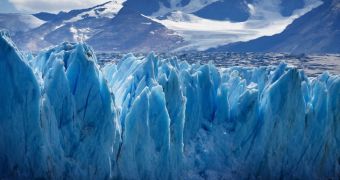Those who think the paparazzi are probably the most inquisitive people on our good old planet might want to reconsider their opinion after learning that a group of scientists have recently taken the time to map the location and the size of nearly all the glaciers in the world.
This team was made up of as many as 74 researchers from 18 different countries, and, as surprising as this may sound, most of the folks who took part in this project did so on a voluntary basis.
The scientists took the time to complete this inventory of the world's glaciers not because they had some weird fascination with ice and felt the need to know everything about its distribution on our planet.
On the contrary, information obtained in this manner is expected to help determine how these glaciers will contribute to global sea level rise in the years to come.
This is because, as the world continues to warm, the blocks of ice are bound to lose at least part of their volume and release it into their surroundings in the form of water, Science News explains.
“A lot of people think that the contribution of glaciers to sea rise is insignificant when compared with the big ice sheets, but in the first several decades of the present century it is going to be this glacier reservoir that will be the primary contributor to sea rise,” says Professor Tad Pfeffer.
All in all, the researchers who carried out this study mapped somewhere around 198,000 glaciers, information about which is now available in the so-called Randolph Glacier Inventory.
These glaciers cover a total area of about 280,000 square miles (approximately 727,000 square kilometers). This means that their overall surface is similar to that of Germany, Denmark, and Poland taken together.
Commenting on the importance of mapping these glaciers, Tad Pfeffer adds, “I don’t think anyone could make meaningful progress on projecting glacier changes if the Randolph inventory was not available.”
It is estimated that, were the glaciers included in this inventory to melt as a result of climate change and global warming, the water contained in them would have high chances to lead to an increase of about 14 to 18 inches (about 35 to 47 centimeters) in global sea levels.
By comparison, the ice that is currently stored in ice sheets in both Greenland and the Antarctic has the potential to cause an increase in global sea levels of as much as 200 feet (roughly 63 meters).

 14 DAY TRIAL //
14 DAY TRIAL //